In celebration of Angell Gallery’s twentieth anniversary, Jamie Angell has selected a group of artworks from his personal collection to represent the gallery’s artists and as a visual narrative to his art world career. His personal career mythology as a gallerist begins as a Hairdresser in Yorkville when he began attending exhibition openings. Time spent in Paris and New York as well as a part time job setting up shows in Forest Hill homes with a private dealer brought him experience in handling art. His presence at every art event mixed with his inexhaustible gregarious attitude brought him closer to artists and other gallery owners and directors. From his collection, Angell has chosen abstract paintings, short videos, many photographs, and moody portraits. Growing their careers from emerging, Angell’s roster includes artists such as Kim Dorland, Gavin Lynch and Steve Driscoll whose works are proudly hung alongside newly represented artists such as Erin Loree.
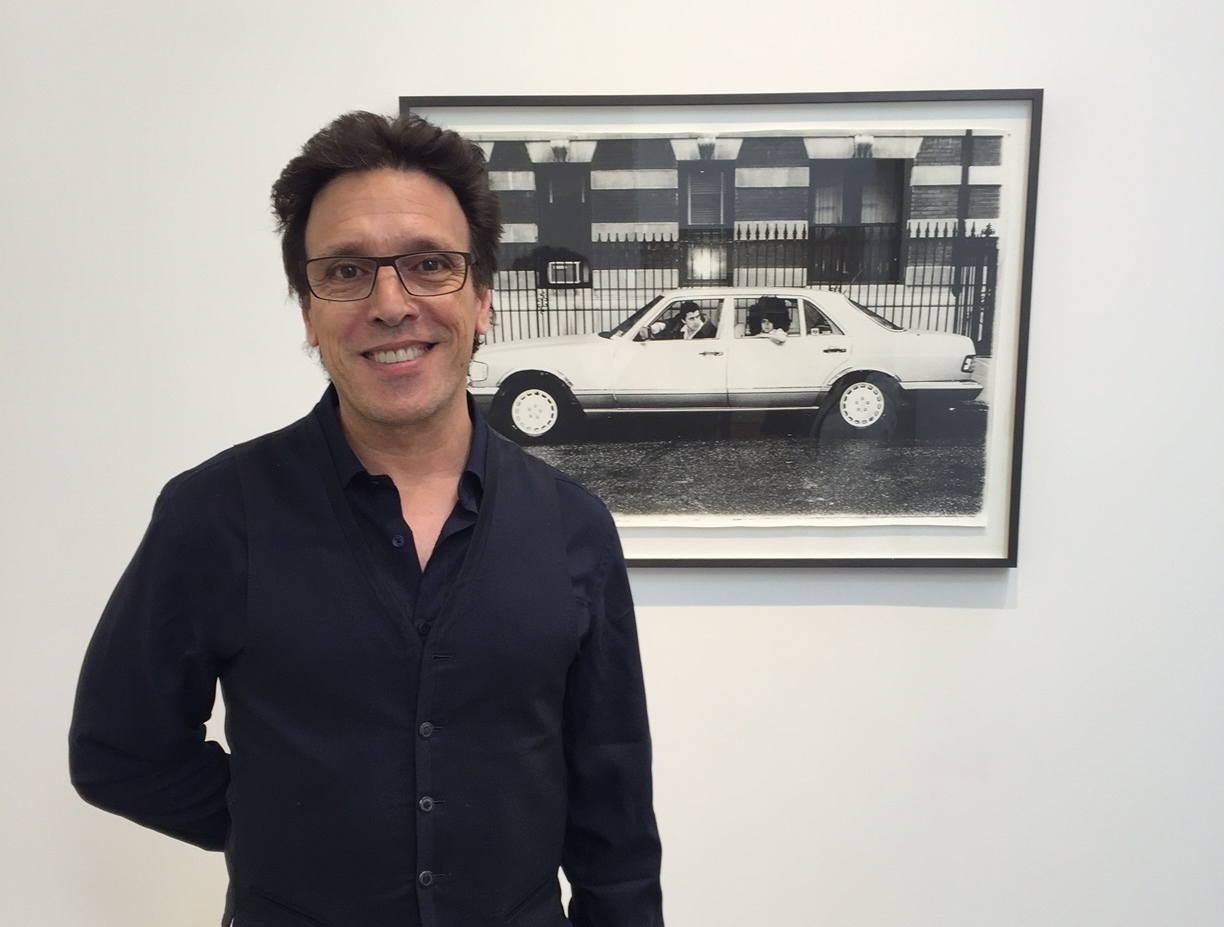 Jamie Angell in front of Tim Roda’s photograph, Untitled #150 (Living Large)
Jamie Angell in front of Tim Roda’s photograph, Untitled #150 (Living Large)
While taking Jamie Angell’s portrait, enjoying the company of his infectious smile, we spoke briefly about one of his favorite photographs: “Untitled #150 (Living Large)” (2007) by Tim Roda. In this photo, a car is parked outside a town house with a man (Roda) in the driver’s seat is looking back, possibly waiting for someone, a young boy (his son) in the back seat stares at the camera, and the camera’s flash appears on one of the apartment’s windows. Roda’s photographic process flies in the face of photography and his works are more subtly self-aware than others in Angell’s collection. Roda denies spacial clarity, he does not use light to enhance or highlight the motif, but uses a traditional depth of field or print with the end goal of crispness. His photographs are staged, often using household items, and family members. Combined with the black and white photographic vocabulary, a sense of nostalgia is consistently achieved – aspects that Angell appreciates in Roda’s work.
In the back room where some works in storage are kept, the most strictly abstract works such as Daniel Hutchinson’s “Zero” (2012) hang together. In the adjacent space, one monitor displays three video works and one short film on loop. In two of the videos there is classic New Media iconography in the form of many busy layers and reference to electronic mediums. Another video, “Stitching the Snow” (2009) by Vessna Perunovich – who also has an abstract painting and sculpture in the show – seems to be a documentation of a traditional land art action involving walking in the snow.
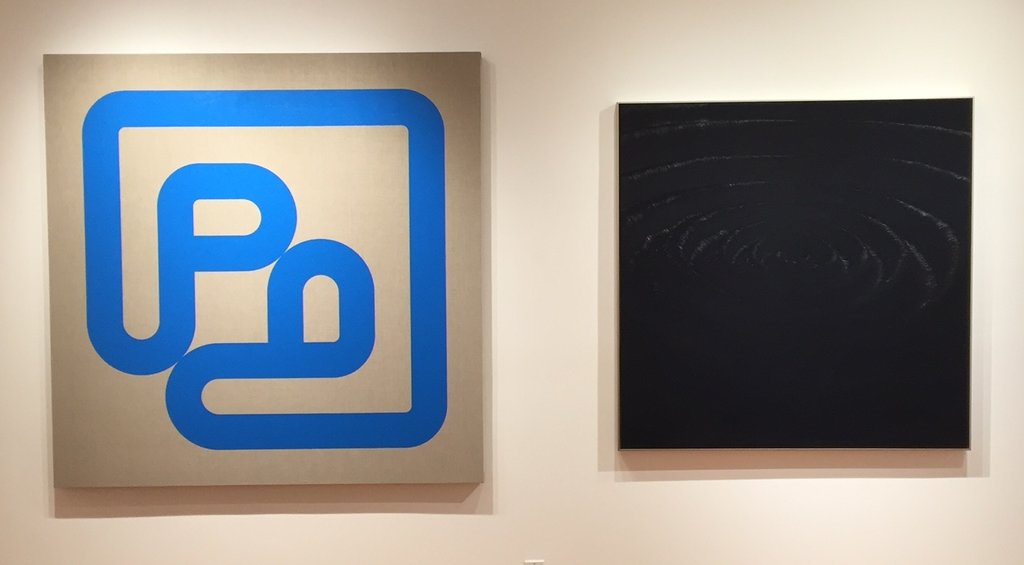 Neil Harrison, Blue Square 2, 2014 (left) & Daniel Hutchinson, Zero, 2012 (right)
Neil Harrison, Blue Square 2, 2014 (left) & Daniel Hutchinson, Zero, 2012 (right)
On the two largest walls of the front main space, works are arranged salon-style and grouped loosely into landscapes and portraits. Hung on the wall of landscapes are works by Erin Loree, Gavin Lynch, Paul Butler and Jon Rafman just to name a few. Some of these works hint at Jamie Angell’s quirky taste. Derek Mainella’s “Untitled (Acid)” (2013) is a painted yellow and black canvas-turned smiley face that is frowning from the weight of its torn canvas features.
A sense of Angell’s collection can also be gathered from his penchant for self-aware photographs. Jakub Dolejs’ photograph “Escape to West Germany” (2002) for example seems to be at first glance a scene of heightened drama, but upon closer inspection is as much staged tableaux, as is the suspended disbelief required for live theater. In Dolejs’ work, the subject leans awkwardly forward holding a cheap suitcase prop, a fake baby, and is posed, standing in fake snow in front of a painted back drop.
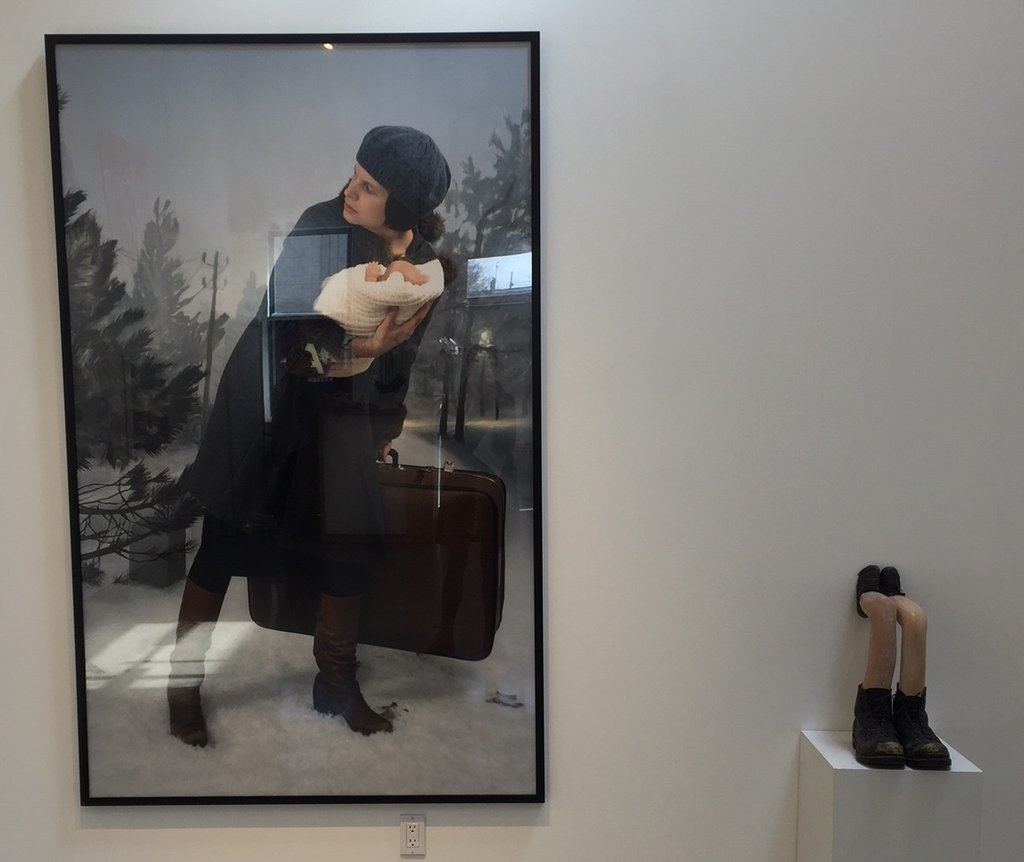 Jakub Dolejs, Escape to West Germany, 1972 (left); Vessna Perunovich, Continuum, 2000 (right)
Jakub Dolejs, Escape to West Germany, 1972 (left); Vessna Perunovich, Continuum, 2000 (right)
On the second large wall among the portraits, a darkness of subject matter emerges. Some of the works are down right scary and uncomfortable. Saul Chernick’s drawing, “The Glutarian and Serpent” (2005) includes a mournful person groping themselves, Rafael Ochoa’s C-print, “Boy with Two Hounds” (2013) is like a nightmare from Goya, and Catherine Heard’s “Untitled” figurative sculpture (1998) made of hair and teeth has since haunted my own dreams. Kim Dorland’s “HER” (2008) is also hung on the portrait wall. The canvas, piled high with inches of thick oil paint had been in storage drying until this occasion.
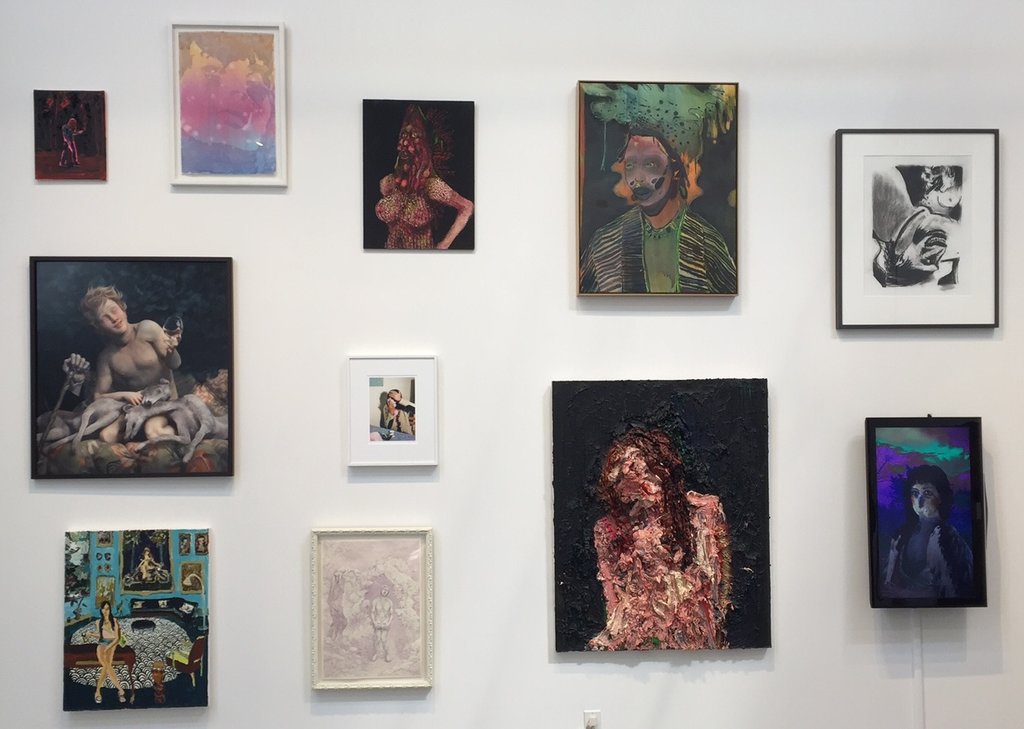 Installation view of the “Portrait” wall
Installation view of the “Portrait” wall
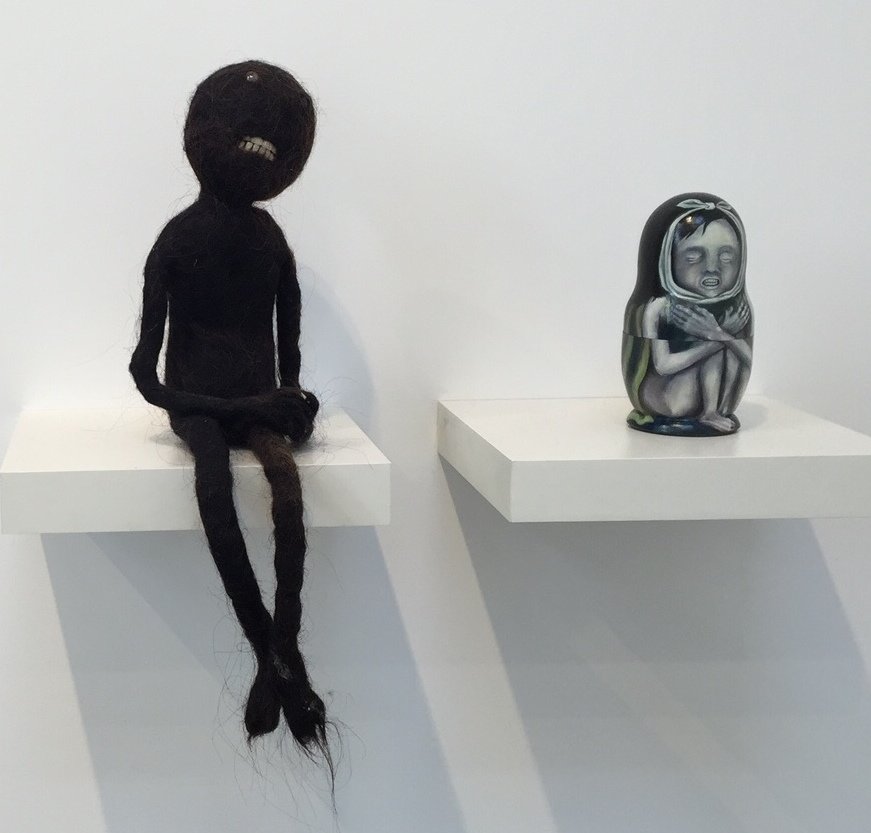 Catherine Heard’s, Untitled, 1998 (left) and Autopsie, 1998 (right)
Catherine Heard’s, Untitled, 1998 (left) and Autopsie, 1998 (right)
While there are impressive art pieces worth travelling to see at Angell Gallery’s twentieth anniversary exhibition, it is the context of all these works together, producing a portrait of Angell as a collector, that is most thrilling.
Text and photo: Alice Pelot
*Exhibition information: April 9 – 23, 2016, Angell Gallery, 1444 Dupont St., Unit 15 (Entrance off Campbell Ave.). Gallery hours: Wed – Sat: 12 – 6 p.m.

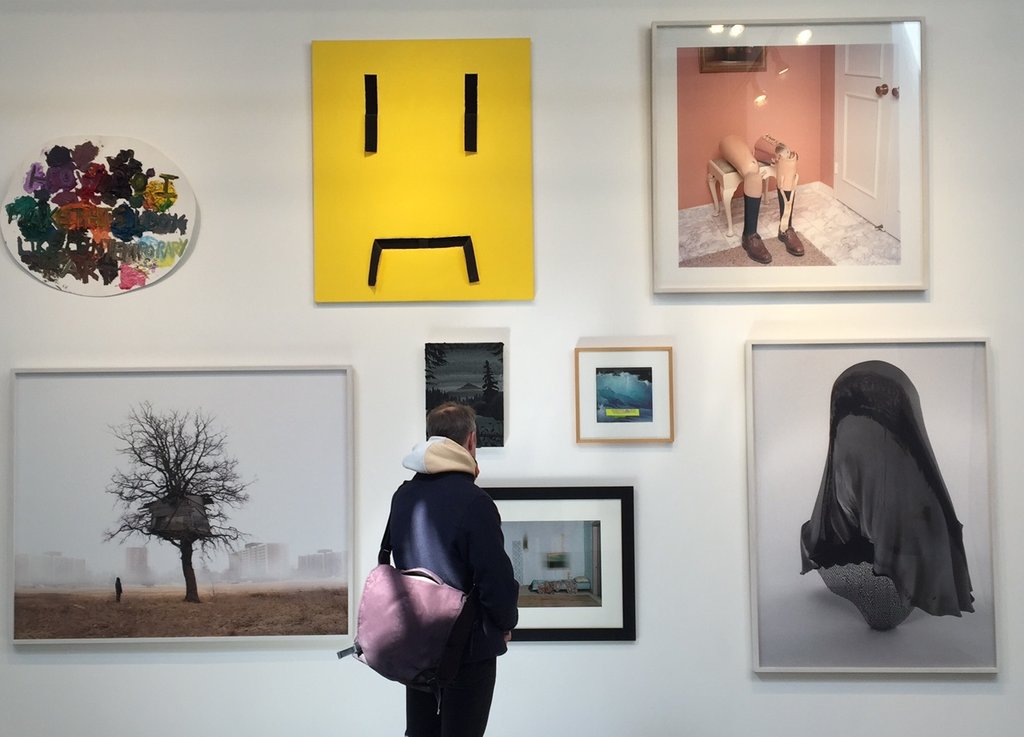
Congratulations to Jamie Angell!
As is well-known in Toronto, and as recent media coverage attests, Jamie has been a pioneer in the city’s art scene from the inception of his gallery 20 years ago.
Not only is he recognized for discovering and giving seminal shows to emerging artists, he has been very generous in educating anyone who comes into his gallery, from collectors to artists, to students to anyone who walks in off the street.
The Toronto art scene is one of the most exciting anywhere and Jamie Angell has been instrumental in building the scene over the last 20 years. We should be grateful to him for his contributions. I am.